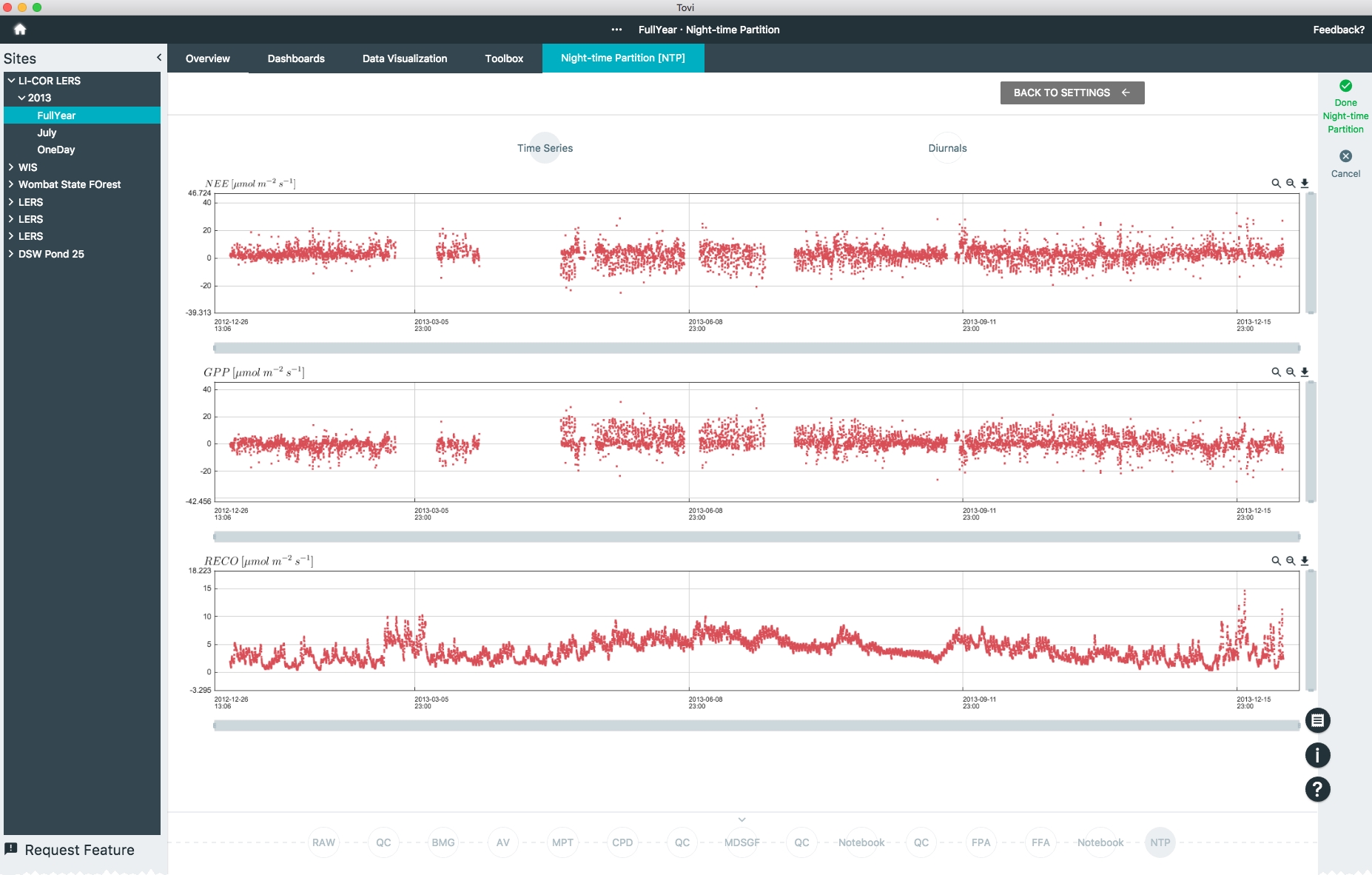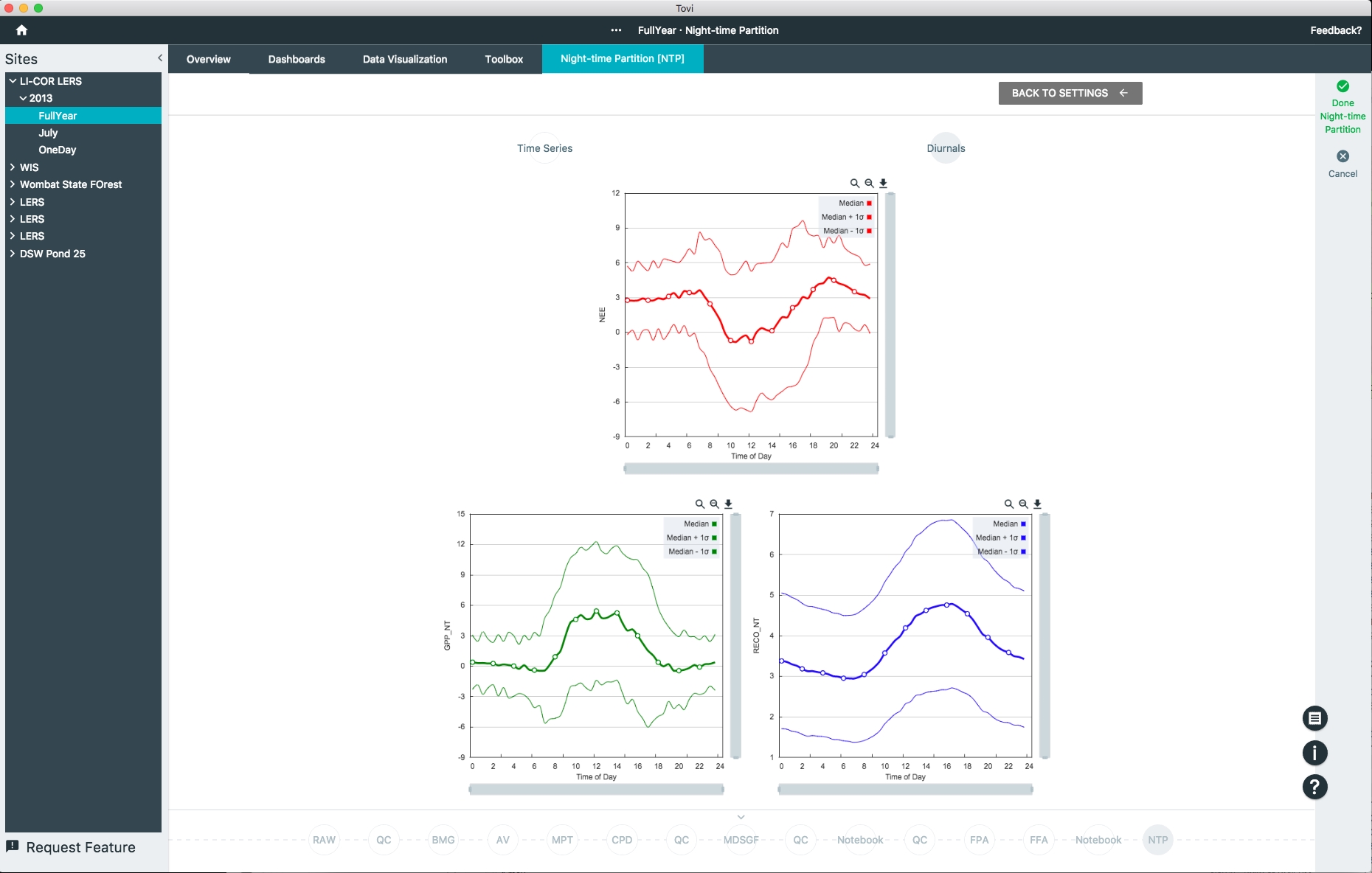Flux partitioning
Eddy covariance flux data sets consist of a continuous series of measurements, which represent the net ecosystem exchange for the variables of interest.
Under certain circumstances, net fluxes can be partitioned into individual components. For example, Net Ecosystem Exchange (NEE) measured on a natural ecosystem can be partitioned into Gross Primary Productivity (GPP) and Ecosystem Respiration (Reco). Evapotranspiration fluxes (ET) can instead be partitioned into the evaporative (E) and transpirative (T) fractions. As of today, Tovi provides a tool to perform NEE partitioning into GPP and Reco.
GPP is the total uptake of CO2 from the surface until the measurement height (photosynthesis) and ER is the total release of CO2 (respiration). Typically, we write this as NEE = ER − GPP. To fix sign conventions, GPP is always non-negative during the day and is zero at night (no sunlight means no photosynthesis, so GPP = 0), and ER is always positive and in general, is non-zero for both night-time and day-time.
NEE can be positive (mainly at night when GPP = 0 but ER > 0) or negative (mainly during the day when GPP > ER). So, the goal of partitioning is to infer two numbers (GPP and ER) from the measured difference between them (NEE). We do this using the following assumptions:
- At night, GPP is 0 (by definition) and therefore ER is equal to the measured NEE.
- ER is a function of a small number of (mainly) meteorological drivers (e.g., TA, TS, SWC ...) and availability of carbon for respiration (substrate).
- GPP can be modeled as a function of light levels and vapor pressure deficit (VPD).
There are several approaches to NEE partitioning and, correspondingly, a number of methods have been proposed. Tovi provides the method described by Reichstein et al., (2005), which falls into the category of the "night-time methods" because it relies on the modelization of ecosystem respiration as a function of mainly temperature, using only night-time data.
Night-time method of Reichstein et al., 2005
If you have enough data and if you exclude those times when turbulence levels are low (u*-filter) then you can use the remaining data to obtain a relationship between ER (= NEE at night) and temperature and use this relationship to estimate ER during the excluded night-time periods and during the day. Once you have values of ER for all hours of the day and using the gap filled NEE (with values for all hours of the day), you can then derive a complete time series of GPP.
The results of night-time partitioning are presented in two ways: Time Series (see Figure 6‑1) and Diurnals (see Figure 6‑2).




